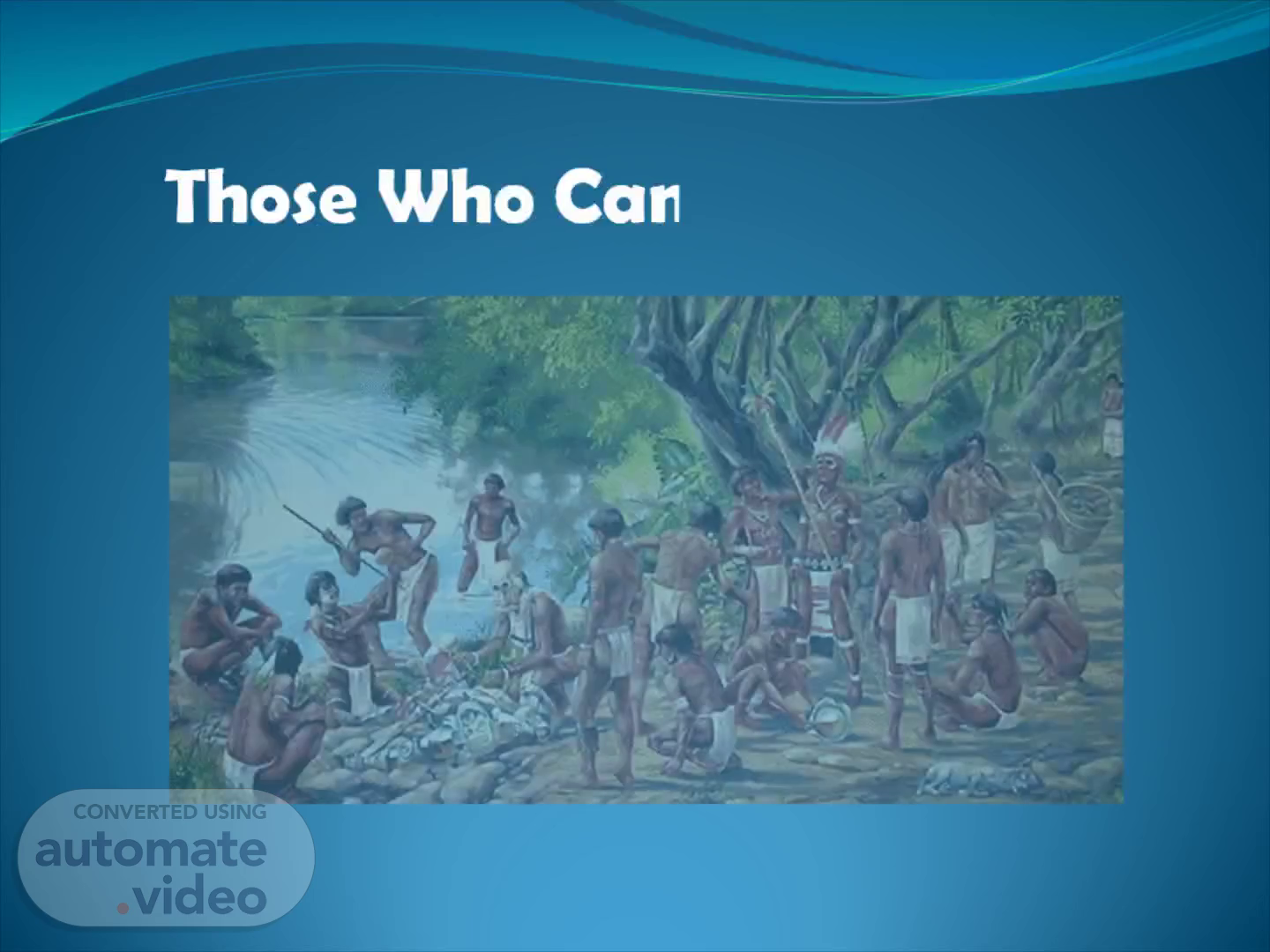Scene 1 (0s)
Those Who Came Before Us - Ancestral Groups (St. Kitts and Nevis)
Scene 2 (8s)
The Arawaks ( Tainos’ ) original homeland was in the forest in the Orinoco Valley in South America.
Scene 3 (21s)
About 2000 years ago, they began migrating from South America travelling in large canoes up the chain of islands in the Caribbean. They usually settled on each island they encountered. Then after a few years, some of them would move on to another island..
Scene 4 (38s)
The Arawaks/Tainos migration route from South America through the chain of Caribbean islands.
Scene 5 (50s)
About a thousand years later, the Caribs (Kalinagos) – who had lived further south in the jungles around the Orinoco River - followed the Tainos into the Caribbean. They also moved from island to island. At each one, they fought the Tainos, pushed them out and established themselves on the island ..
Scene 6 (1m 7s)
Tainos lived on St. Kitts and Nevis at least 1500 years ago, but by time the Europeans arrived in the Caribbean in the late 15 th century, the islands were occupied by Kalinagos (Caribs).
Scene 7 (1m 25s)
By the time the Spanish arrived in the Caribbean at the end of the 15 th century, the Caribs occupied the Lesser Antilles and the Arawaks lived in the G reater Antilles.
Scene 8 (1m 40s)
In 1492 Christopher Columbus made his first of four voyages to the Caribbean. He named all the islands he sighted and claimed them in the name of Spain He came across St. Kitts and Nevis during his second voyage in 1493.
Scene 9 (1m 57s)
The Spanish never settled on St. Kitts, but i n 1624 Thomas Warner established the first English (British) settlement on the island Nevis was settled by the English in 1628.
Scene 10 (2m 9s)
A small group of French explorers arrived in St. Kitts in 1625 and the English settlers agreed to share the island with them.
Scene 11 (2m 20s)
Historic St. Kitts - Timeline: History of St. Kitts.
Scene 12 (2m 32s)
First edition of the Anglo-Spanish treaty. The French and English were often at war and the ownership of St. Kitts passed back and forth between them In 1713, the island was finally returned to Britain for the last time and it remained a British colony for the next 270 years.
Scene 13 (2m 50s)
In the 1640s settlers in St. Kitts and other English speaking Caribbean islands, switched from growing tobacco to growing sugar cane. The production of sugar from cane required a large number of workers..
Scene 14 (3m 5s)
British West Indian planters turned to using enslaved Africans to work on their sugar plantations.
Scene 15 (3m 17s)
The majority of Kittitians and Nevisians today are descended from these African people.
Scene 16 (3m 25s)
Millions of Africans are estimated to have been captured and brought to the Caribbean and America to work as enslaved labourers..
Scene 17 (3m 37s)
In 1834 slavery was ended in the English speaking Caribbean.
Scene 18 (3m 48s)
Different ancestral groups that came to St . Kitts and Nevis up to Emancipation.
